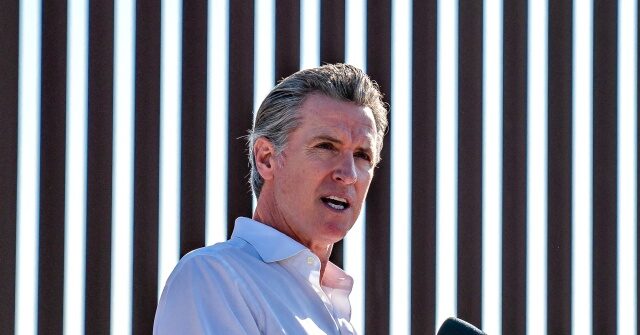California Governor Gavin Newsom recently visited the U.S.-Mexico border, emphasizing his opposition to President-elect Donald Trump’s proposals regarding tariffs and mass deportations. Newsom’s comments came against the backdrop of Trump’s threats to impose a 25 percent tariff on goods from Mexico as a response to narcotics trafficking and illegal immigration. Trump articulated that this tariff would remain until the flow of drugs, particularly fentanyl, and unauthorized immigrants into the U.S. was halted. During his visit, Newsom reiterated concerns about the detrimental effects such tariffs could have on the economy, particularly regarding inflation and impacts on the job market.
Newsom portrayed the proposed tariffs as an aggressive monetary burden, warning that they could drive up costs for consumers, notably citing a potential increase of $3,000 on vehicles imported from Mexico. He framed the tariff as a “25 percent tax increase,” a characterization aimed at underlining the essential financial strain such policies could impose on average Americans. By aligning with business interests warning against tariffs, Newsom sought to illustrate the wide-ranging ramifications that Trump’s economic strategies could have on the already volatile markets and price structures within the United States.
The Governor also criticized Trump’s mass deportation agenda, contending that potential large-scale expulsions of undocumented immigrants would critically undermine labor in essential sectors such as agriculture and construction. He highlighted that a significant portion of the workforce in these industries consists of undocumented individuals, making their potential removal a disastrous prospect for food production and housing availability. According to Newsom, these deportations would not only exacerbate food prices but would also pose a considerable challenge to maintaining stable housing costs, creating a ripple effect through the economy.
Newsom’s arguments reflect broader apprehensions within various sectors regarding labor shortages that could arise from stringent immigration policies. His stance is bolstered by sentiments expressed in a recent Wall Street Journal piece, which discussed the construction industry’s opposition to mass deportations and tariffs. Industry leaders warned that such policies would lead directly to a shortage of laborers, thus impeding construction efforts and driving up housing costs, which could contribute to the already problematic issue of housing affordability in California and beyond.
As Newsom and industry professionals highlight concerns about labor shortages, the discourse on immigration’s impact on economic factors continues to evolve. There’s a notable contrast between the arguments surrounding the necessity of undocumented labor and the political rhetoric advocating for stricter immigration measures. While major construction firms and agricultural interests argue that reduced illegal immigration leads to higher costs across the board, certain research points to immigration as a contributing factor to rising home prices, indicating a complex and potentially contradictory landscape in policy discussions around immigration and labor.
In conclusion, Newsom’s visit to the border and subsequent comments underscore a larger, ongoing debate surrounding immigration policy, economic performance, and the vulnerabilities of specific sectors reliant on undocumented labor. With potential tariffs and deportation strategies gaining traction under Trump’s administration, key economic players, including governors like Newsom and various industry leaders, are rallying against these proposed measures, illustrating the deep interconnections between immigration, labor, and overall economic stability in the U.S.

